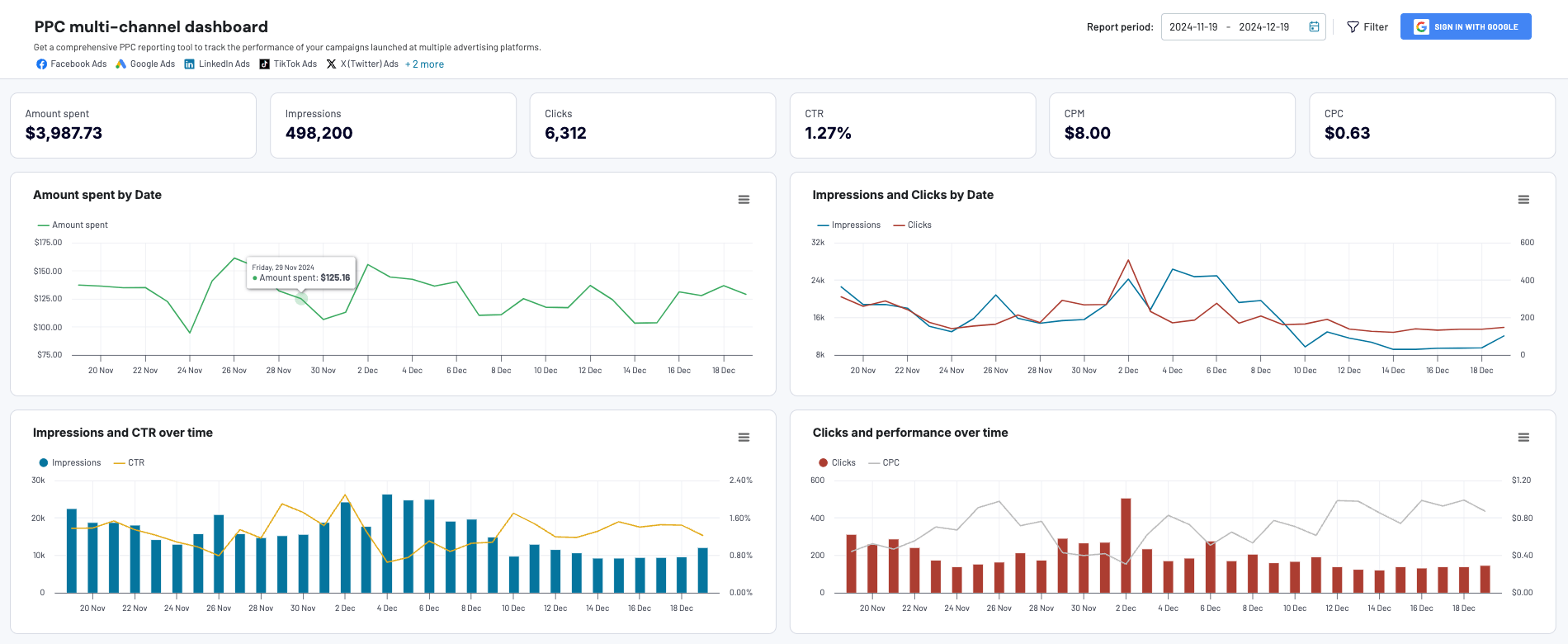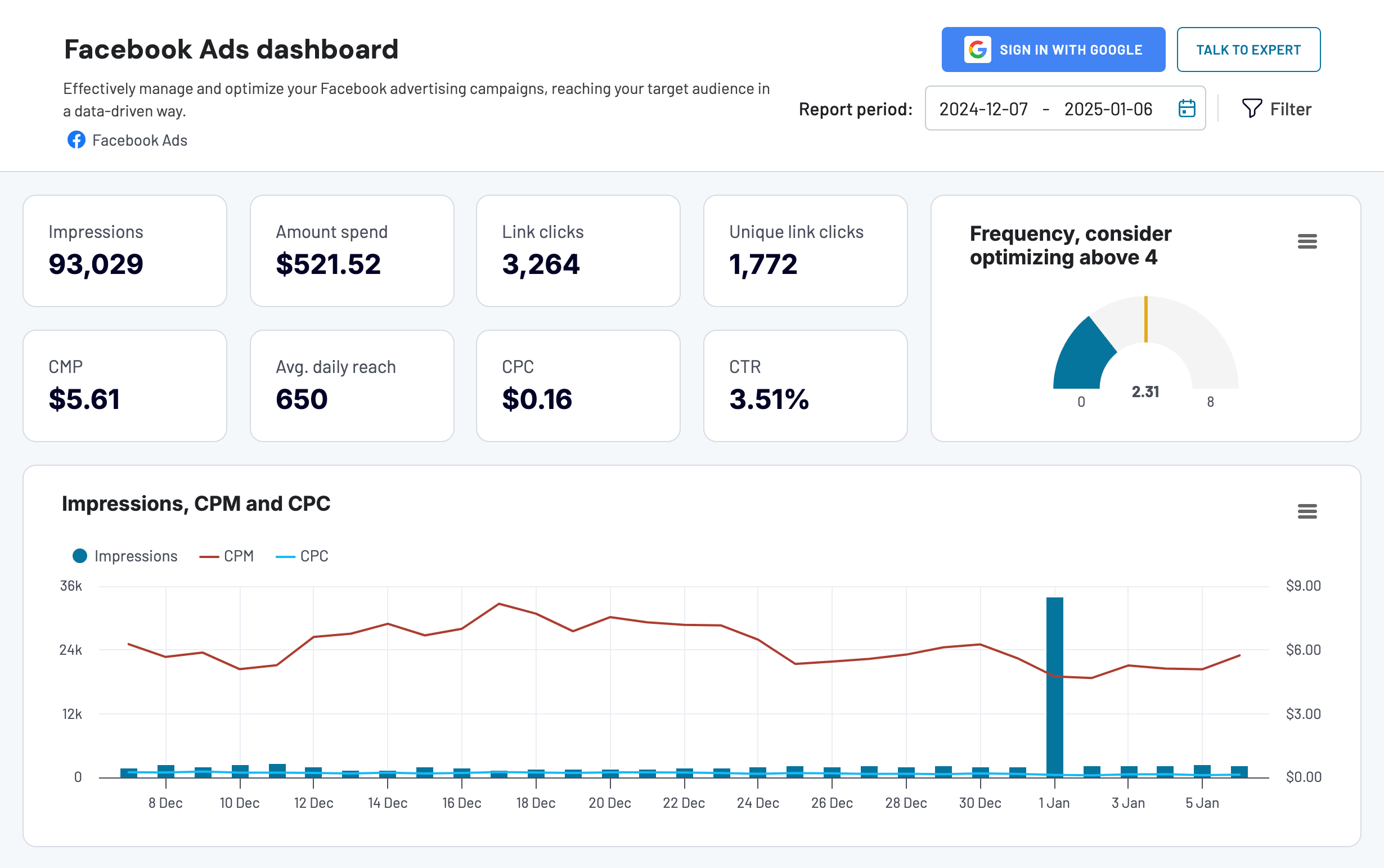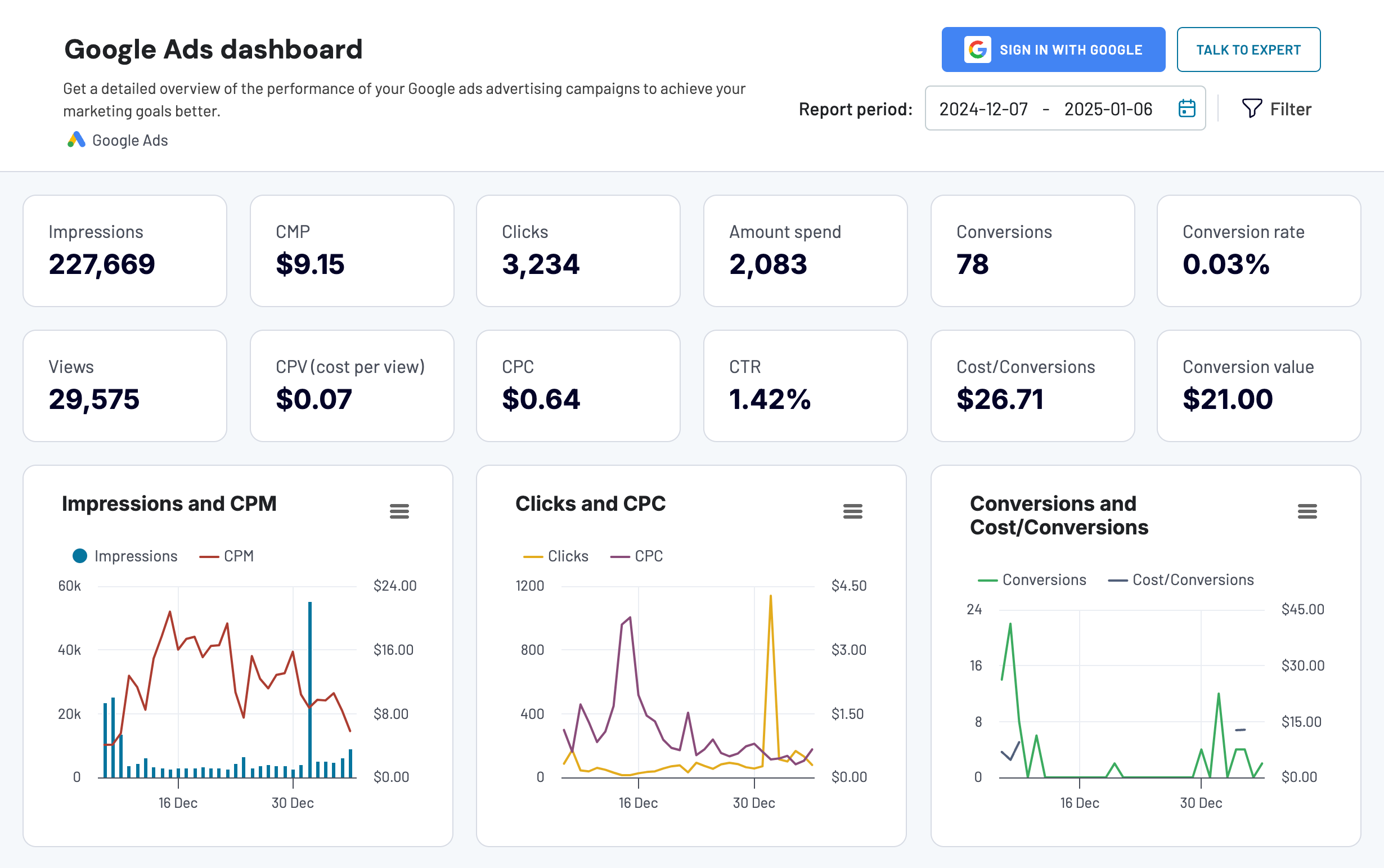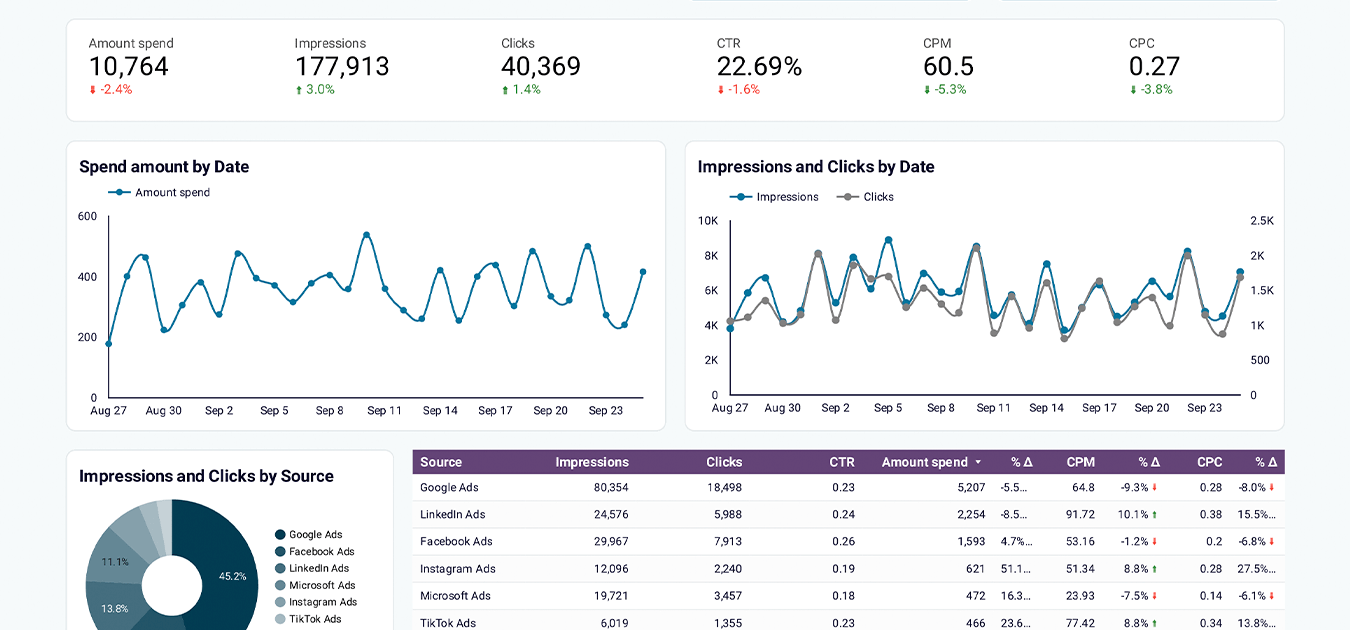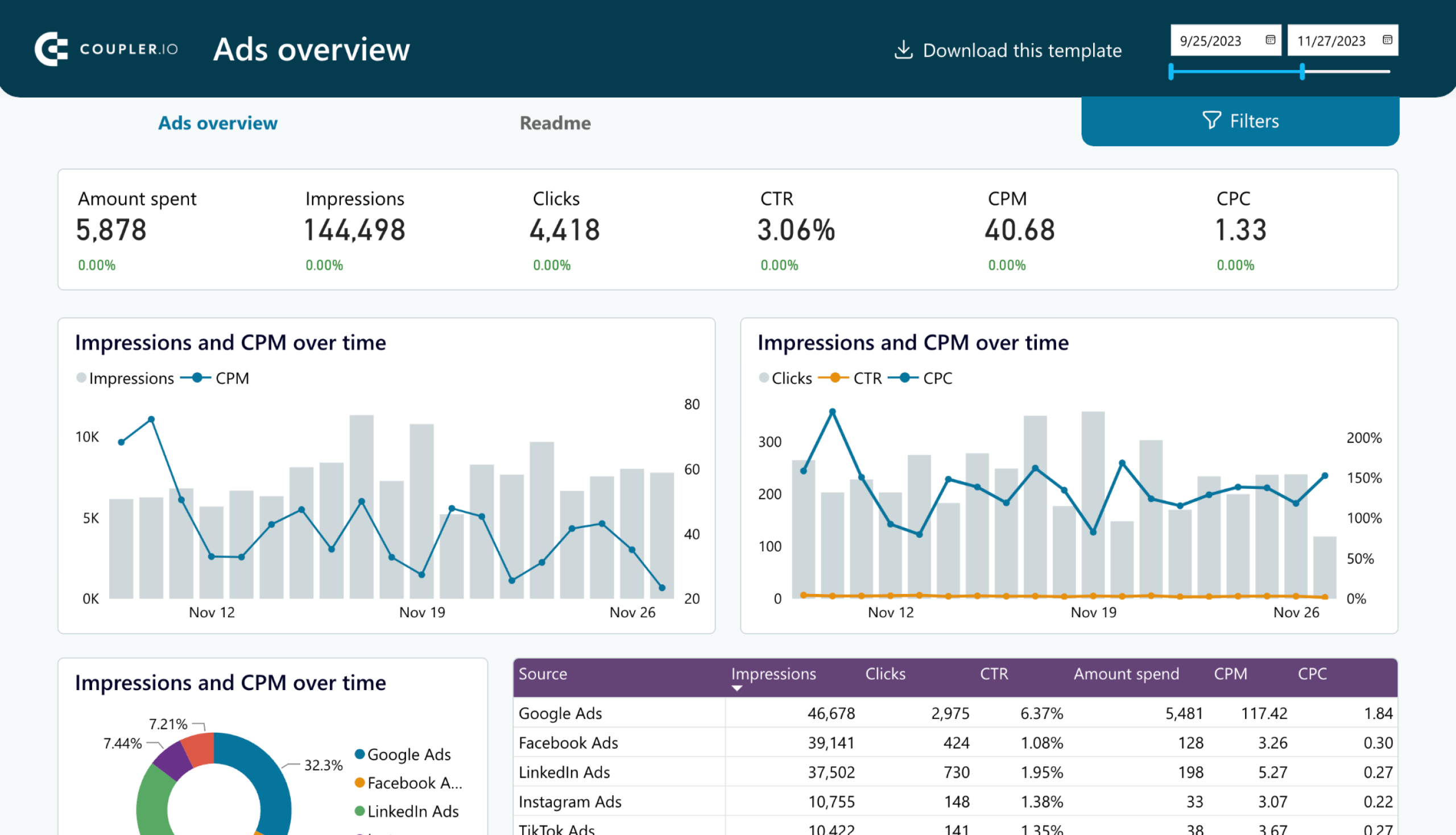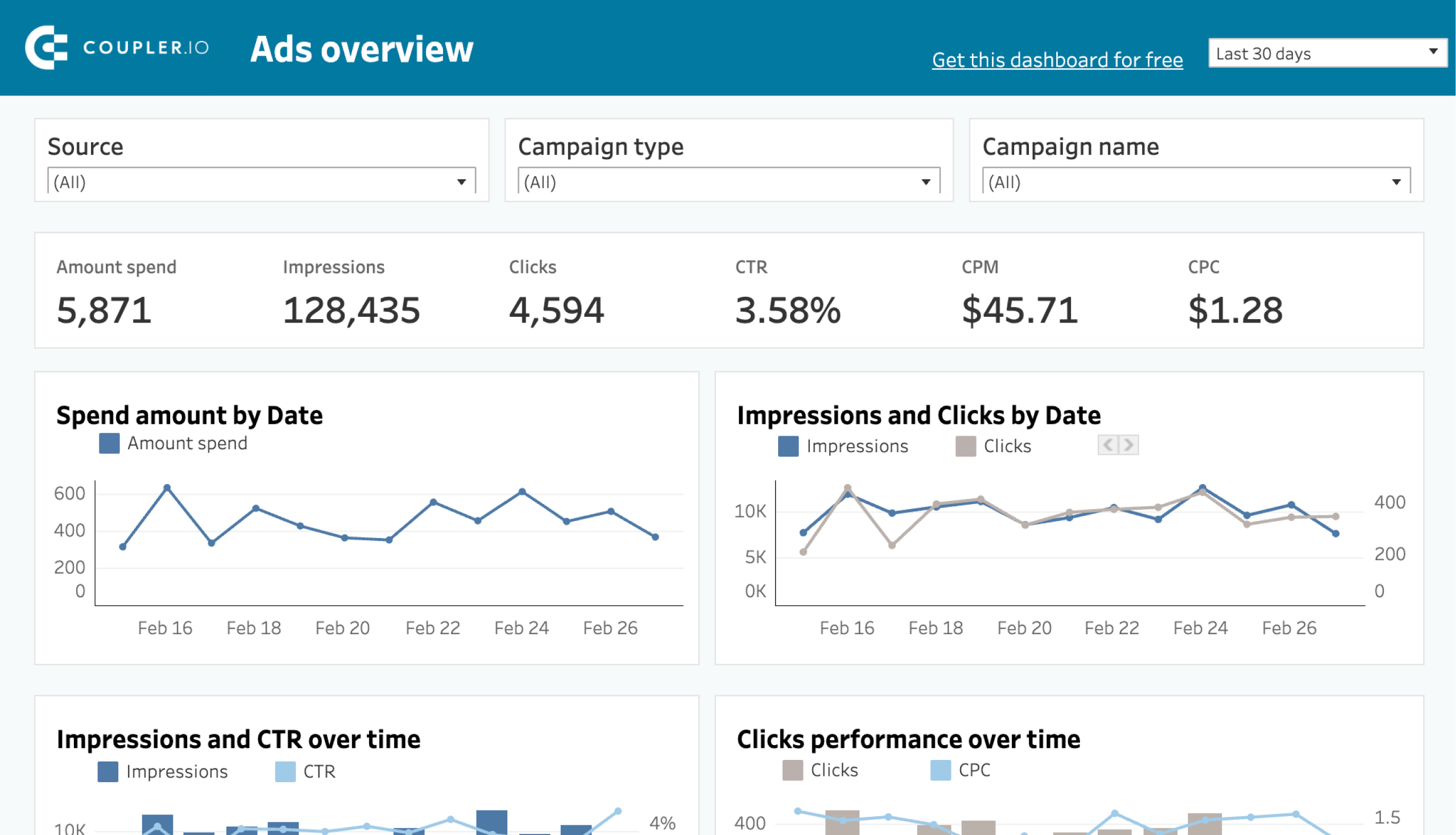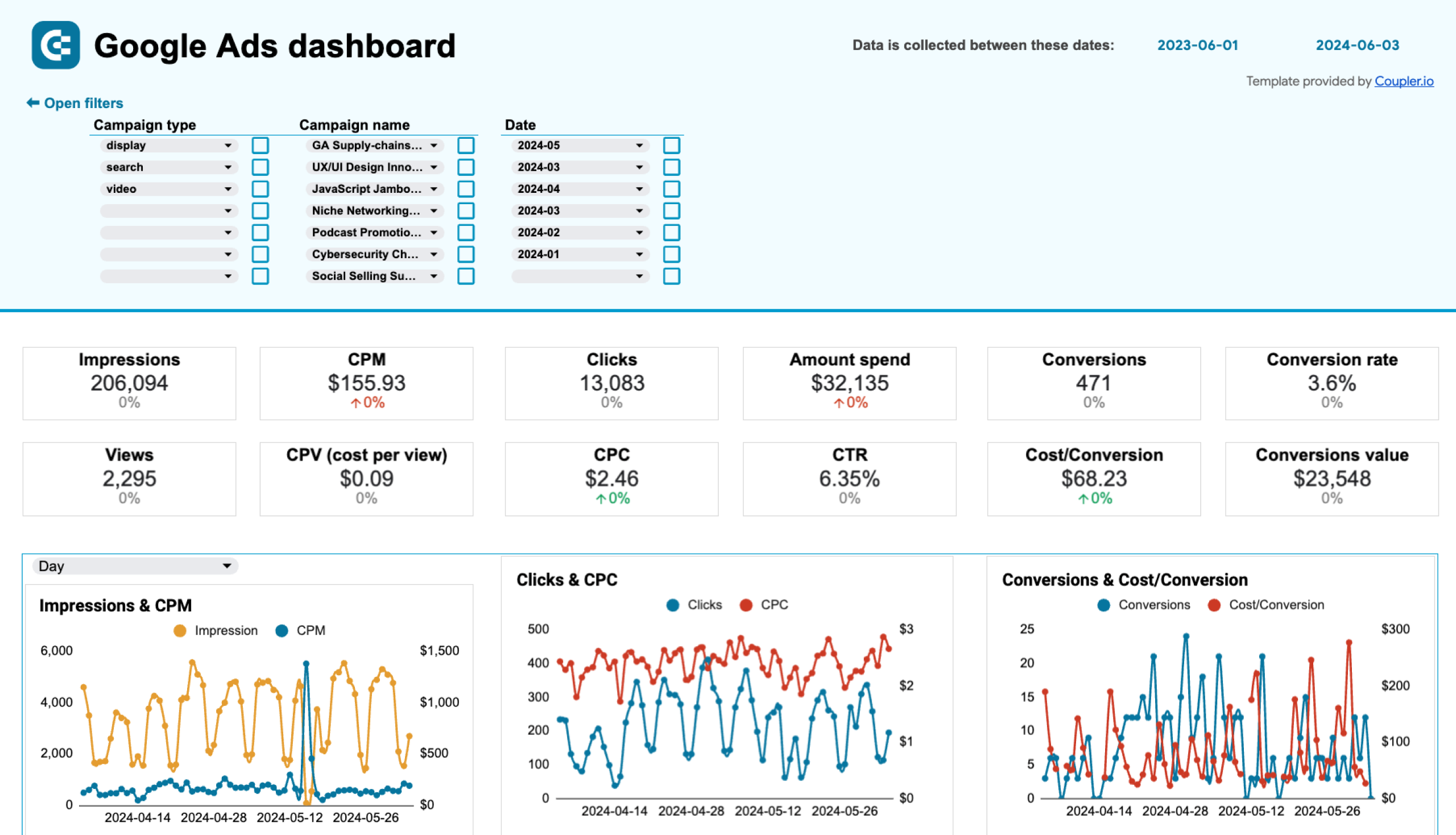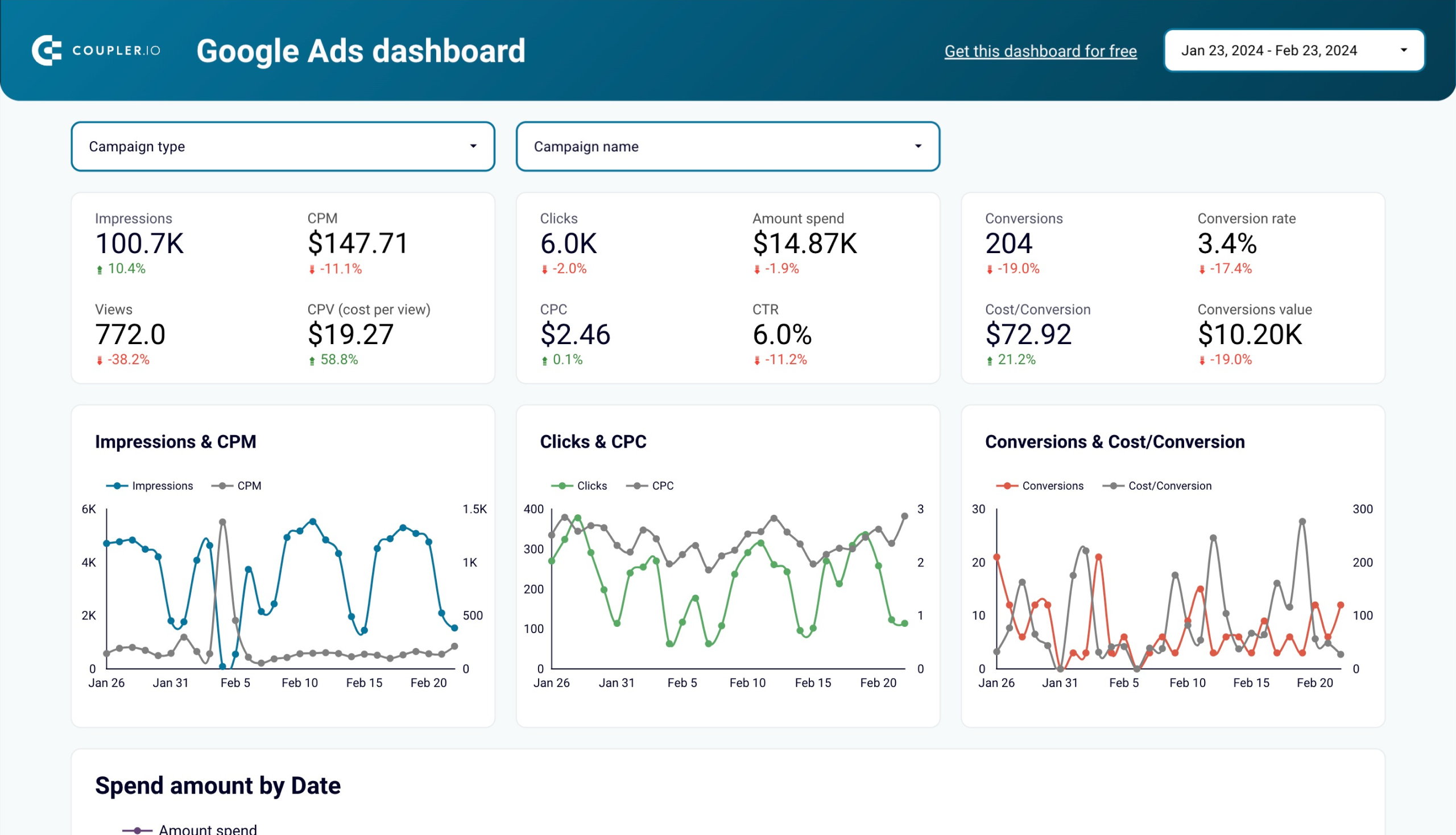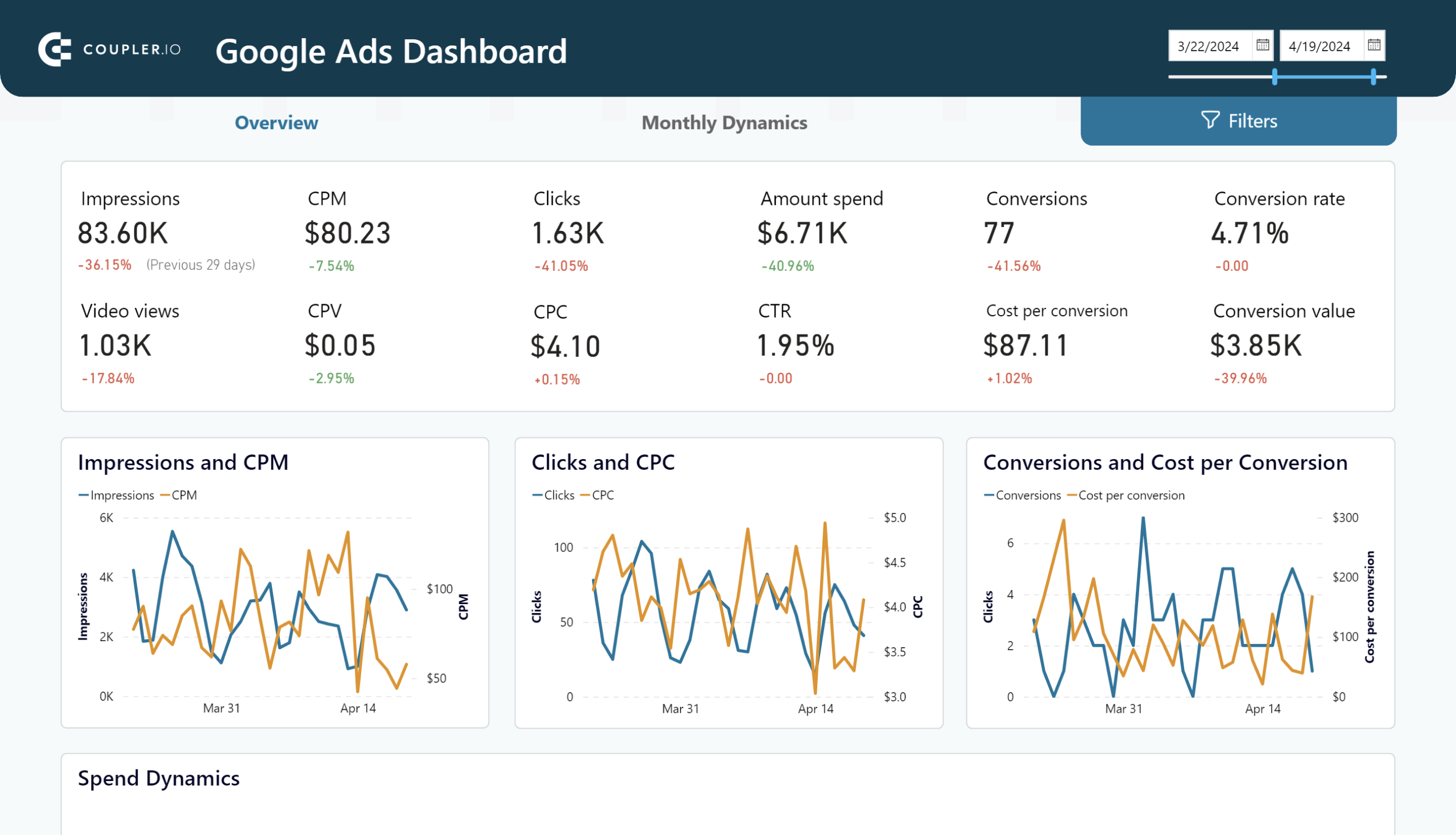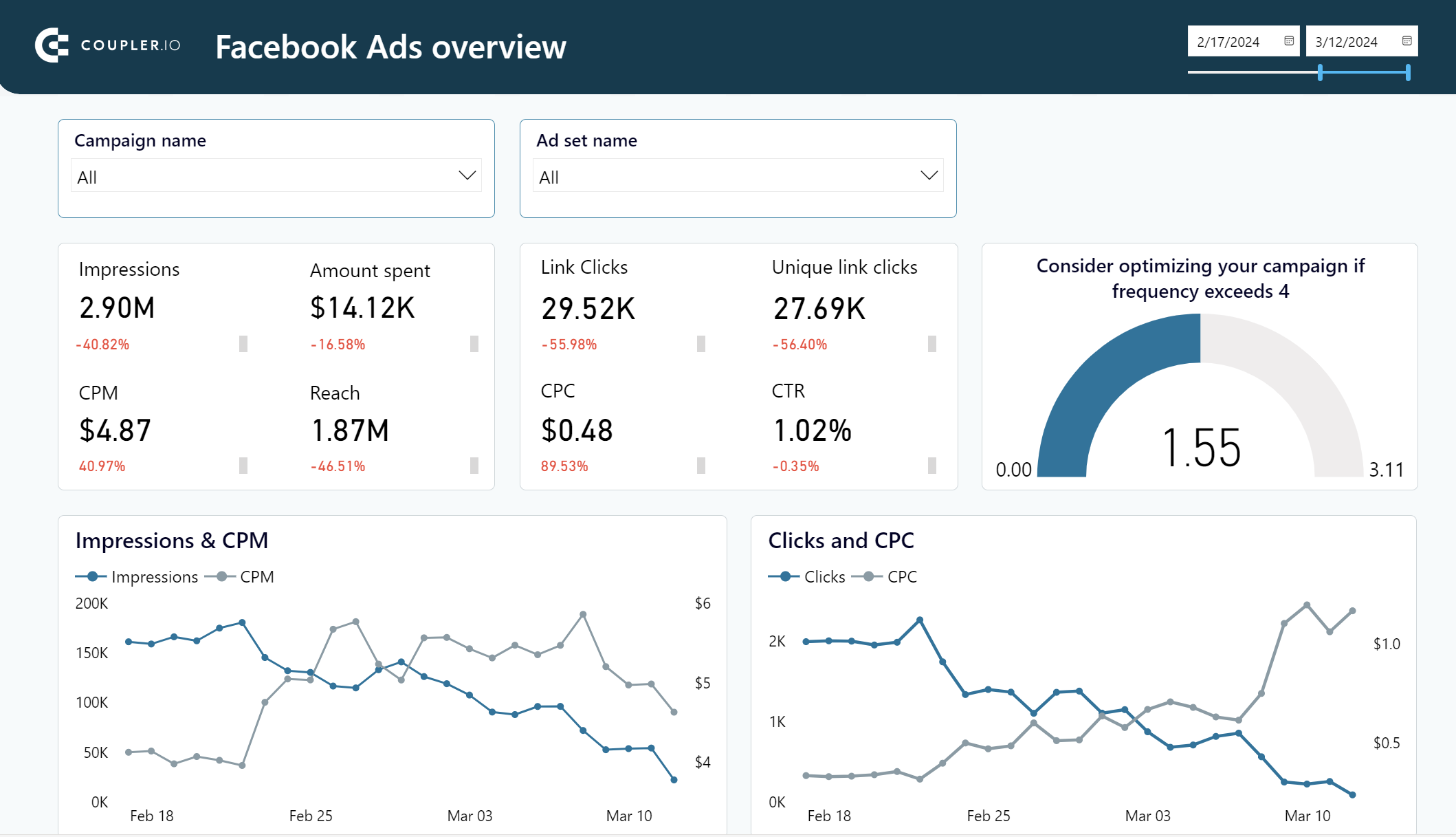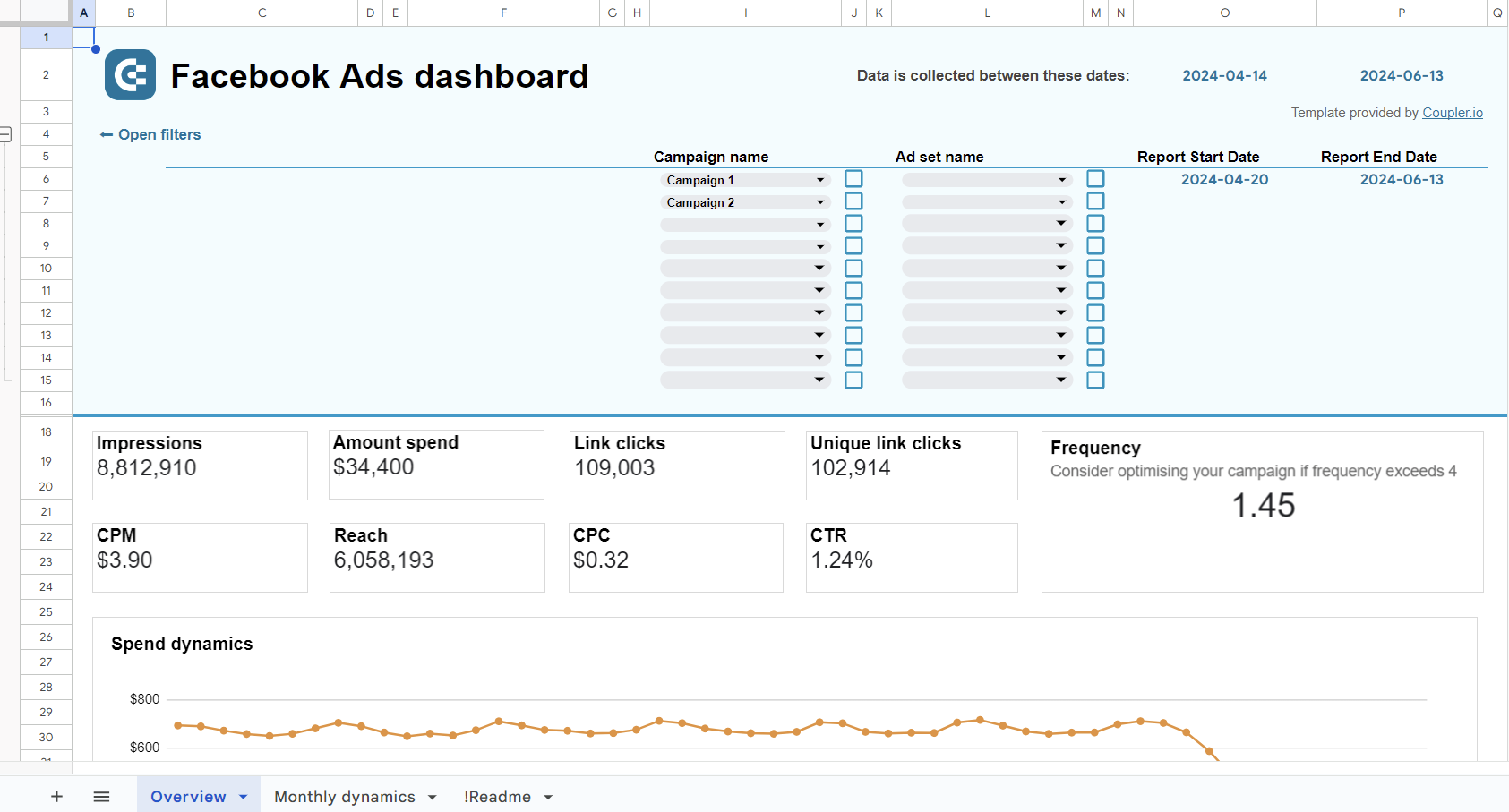In this blog post, you’ll find a complete checklist for conducting a PPC audit. More importantly, this checklist is tried and tested – we use it ourselves, and it works well. Every time we go through these steps to revise our PPC campaigns, there’s always something to improve.
If you conduct a PPC audit regularly, following this step-by-step guide, I’m sure you’ll notice results as well. The main improvement, of course, is maximizing clicks and conversions while keeping your ad costs down.
Let’s see how to get there!
What is a PPC audit?
A PPC audit is when you review and analyze your PPC campaigns to estimate their performance and make changes to improve the results. Usually a PPC audit includes updating campaign settings, working with keywords and ad group structure, analyzing crucial metrics, and so on.
Sometimes you might need to do a PPC audit when you start working with a new brand and want to assess what was done before. But more often, you just need to analyze the ad campaigns you or your team are running. This allows you to adjust your strategy in time and make your ads more efficient.
PPC audit checklist for a quick start
Now, let’s explore each of these to-do items in more detail and see how to perform a PPC audit that drives results.
How to do a PPC audit?
As you can see from the checklist above, a PPC audit typically consists of several parts. The most important ones are analyzing metrics, revising keywords and ad group structure. Updating content, campaign settings, and bidding strategy are also essential.
In the sections below, we walk you through the main checkpoints and give useful tips. After this, you will know how to conduct a PPC audit and make your campaigns successful.
1. Start by checking the crucial metrics
There are plenty of metrics to track, depending on your campaign goals and focus. For some campaigns, you might be after impressions, but most of the time the goal is maximizing conversions and, ultimately, ROAS.
Here are the most important metrics to track:
- CPC (cost per click) – what you pay when a user clicks your ad.
- CTR (click-through rate) – the proportion of impressions that convert to clicks.
- CPA (cost per acquisition) – how much you pay to acquire one conversion.
- ROAS (return on advertising spend) – revenue generated compared to your ad spend.
- Conversion rate – how many conversions you get compared to the number of clicks. Don’t forget to make sure that conversions are properly tracked.
You should analyze your numbers and look at the PPC metrics as a whole to see the full picture. For example, if you have a high CTR – it’s not necessarily such good news if the conversion rate is low. This means that your ad seems relevant to the audience, but they don’t find what they are looking for on your landing page.
You can use such findings to fix what’s not working.
2. Use a PPC audit dashboard for continuous monitoring
Tracking the core metrics should be an ongoing activity. So, there’s no need to wait for a comprehensive PPC audit for this. If you always keep an eye on your campaigns’ performance, it’s easier to make adjustments on the go and swiftly react to any changes. Reports in your Google Analytics and Google Ads account might seem an obvious place to start. But when you work with multiple pay-per-click channels, it’s often more convenient to gather all data in one place for a cross-channel report.
If you are more comfortable working with spreadsheets, you can create an automated self-updating PPC report in Google Sheets or Excel. However, we recommend tracking PPC metrics with a dashboard as visualized data is easier to analyze and share. Check out the PPC dashboards offered by Coupler.io for free.
3. Analyze and update keywords
Keywords are the backbone of your PPC campaign. When you perform a PPC audit, keyword research is probably the part that will take most of your time. Well-optimized keywords can significantly improve performance while leaving them unoptimized can lead to wasting your ad budget to no avail.
- Check quality scores. This score shows how relevant your ad is for users compared to other ads they see. Ideally, the quality score for your keywords should be from 7 to 10. A higher quality score brings you more relevant and converting leads. It’s better to pause keywords with lower scores.
- Identify poorly performing keywords. By analyzing impressions, clicks, and conversions, you can spot underperforming keywords. Our recommendation is to pause them as well – they cost you money, but bring little results. Instead, focus on high-performing keywords.
- Pause seasonal keywords. It’s better to pause keywords connected to specific holidays if they are not relevant right now (for example, Christmas keywords in summer).
- Add new keywords to your current list. Analyze competitors’ keywords, take another look at your product, and see what else might be added. For example, you can get some insights from the Google Ads search terms report. Expanding the list of your keywords will help you improve results.
? Need ideas on what to include? Try these ChatGPT prompts for PPC to generate keyword ideas, improve ad copy, or streamline your PPC audit process.
- Don’t shun long-tail queries. This search query type is actively used by people and can bring you highly relevant traffic. For best results, consider using a mix of different keyword match types (broad match/exact match) to make the most of the algorithms.
- Update your negative keyword list. These are keywords that you don’t want to trigger displaying your ad. If you see that some keywords bring high CTR but poor engagement – it’s better to add them to the negative list. This will help you optimize your PPC budget.
- Check the impression share of your keywords. If the impression share is low, then, someone gets more traffic for this keyword and more conversions, so you will need to make adjustments.
These steps will improve your ads’ performance on the search network.
4. Update ad group structure
A PPC account audit wouldn’t be complete without revisiting ad groups. It’s important to ensure they have a proper structure with clear categories and subcategories, and highly relevant keywords. Checking ad extensions is also helpful.
- Align the ad group structure with your current proposition. Take another look at your offering – maybe something changed, the focus shifted to another product or audience segment? Make sure your ad groups align with current goals.
- Limit the number of keywords per group. Try to keep the number of keywords to about 15-20 per group. This will improve the focus and allow you to create more tailored ad copy.
- Include highly relevant keywords in each group. Your ad groups should not be too broad. Add only keywords that are directly related to each other. If something feels like a bit of a stretch, it’s better to create a separate ad group.
5. Check targeting settings
- Revisit your personas. Double-check your audience characteristics and reread your brand’s target persona description. This might give you some additional insights. Check what’s trending for your audience, what hot topics you could use to catch your prospects where they are now. A remarketing campaign can also be a good idea to revive your audience’s interest.
- Focus on geotargeting. Check what geographical areas have the highest conversion rate and increase your bid for those locations. Alternatively, you can run multiple campaigns, each targeting a specific geo-segment. Such a focused approach to location targeting can significantly enhance performance.
6. Review and edit content
And, of course, compelling, relevant, and engaging content is of the utmost importance.
- Revise and update copy. Make sure that the copy is not outdated, include new relevant keywords to help searchers find you, and check CTAs. And, of course, this applies not only to text ads but to copy in all your ads, as well as landing pages.
- Check customer reviews. See what your customers are saying – maybe this will give you more insight into their motivations and use cases. This information can then be incorporated into ad copy to create more relevant content.
- Analyze competitors’ ad copy. Check what your competitors are doing and, consequently, what your customers are looking at when making a choice between you and them.
- Perform A/B testing. Refresh designs, if possible, and update messages. Ideally, you should have a couple of ad options for each ad group. Don’t forget to check the results of the A/B testing later and then switch to the winning option.
- Revisit and refresh landing pages. This is one of the crucial areas for every ecommerce company, and it requires close attention. Make sure your landing pages are aligned with the ad groups and your customers can find exactly what they are looking for. Low relevance can affect your ad rank.
7. Revise your bidding strategy
When reviewing your bidding strategy, make sure that the biggest chunks of your ad budget go to the best-performing ad groups. Likewise, the best-performing parameter should be prioritized within ad groups.
- Test automated and manual bidding. You can experiment with switching between these two types to see which one drives better results. Typically, manual bidding gives you more control and flexibility compared to automated bidding. And, eventually, this can help you greatly optimize your budget. However, some advertisers gain better results with automated bidding. So testing both approaches can be quite useful.
- Use a channel-specific bidding strategy. Take into account differences between the channels – one-size-fits-all is not the best strategy. Some channels might be more relevant than others and should be prioritized. Also, some channels might generate a lot of traffic but translate into low-quality leads. Such things should be spotted and addressed.
- Use multiple bidding tiers. You can set your ad bids differently depending on the time and the day of the week. For example, if you know that your customers are more likely to be active on Friday evening rather than on Monday morning, you can adjust accordingly.
An optimal approach would be to list all the changes and ideas you want to try out and test bid adjustments incrementally.
8. Do period-over-period analysis
Finally, check how your results compare to the same metrics and outcomes for the previous month, quarter, and year. If your campaigns perform better, that’s a good sign. If not, you might learn something helpful from analyzing previous results.
Similarly, comparing your outcomes to industry PPC benchmarks and statistics can reveal important insights into the success of your campaigns.
Either way, it’s a good idea to define factors contributing both to high and low campaign performance. This will allow you to understand how to improve further. If you perform a PPC audit regularly, you will have relevant historical data already collected and ready for analysis.
How to prepare a PPC audit report?
If you want to present your findings and adjustments made to your team, clients, or stakeholders, you might need to prepare a PPC audit report. What information you should include, depends on the audience.
- If you are going to present your results to C-level, they are likely to be more interested in things like budget optimization, return on investment, and so on. So it’s better to focus on metrics such as ROAS, cost-per-click, and cost-per-acquisition. A high-level presentation will be enough, so there’s no need to overload it with too many details.
- If your target audience is digital marketing professionals, they might be interested in nitty-gritties – what your approach to PPC management is, what the results of your PPC tracking are, how your PPC strategy changed, and what improvements translated into the most significant results.
PRO TIP: Use a PPC audit template and build a PPC dashboard in minutes
Tracking metrics is one of the most important parts of an audit. When you use automated live dashboards, you always have access to the latest metrics in a visualized format. As a result, your PPC data is basically always ready for analysis – you don’t need to gather or update it when you need to conduct a PPC audit. It’s also quite convenient to analyze it directly in the dashboard and share it with the stakeholders without giving them access to your accounts.
Of course, you can also check your metrics in your PPC channel apps or GA4, but you won’t have much customization in this case. What we offer you instead is to use these free templates.
#1. PPC dashboard template for a cross-channel campaign audit
It’s a ready-to-use solution that allows you to get a solid PPC report connected to your ad analytics sources with just a few clicks. The dashboard has a built-in Coupler.io connector to all common ad platforms including Facebook Ads, Google Ads, Twitter Ads, etc. As a result, you can easily populate the dashboard with your ad performance data.
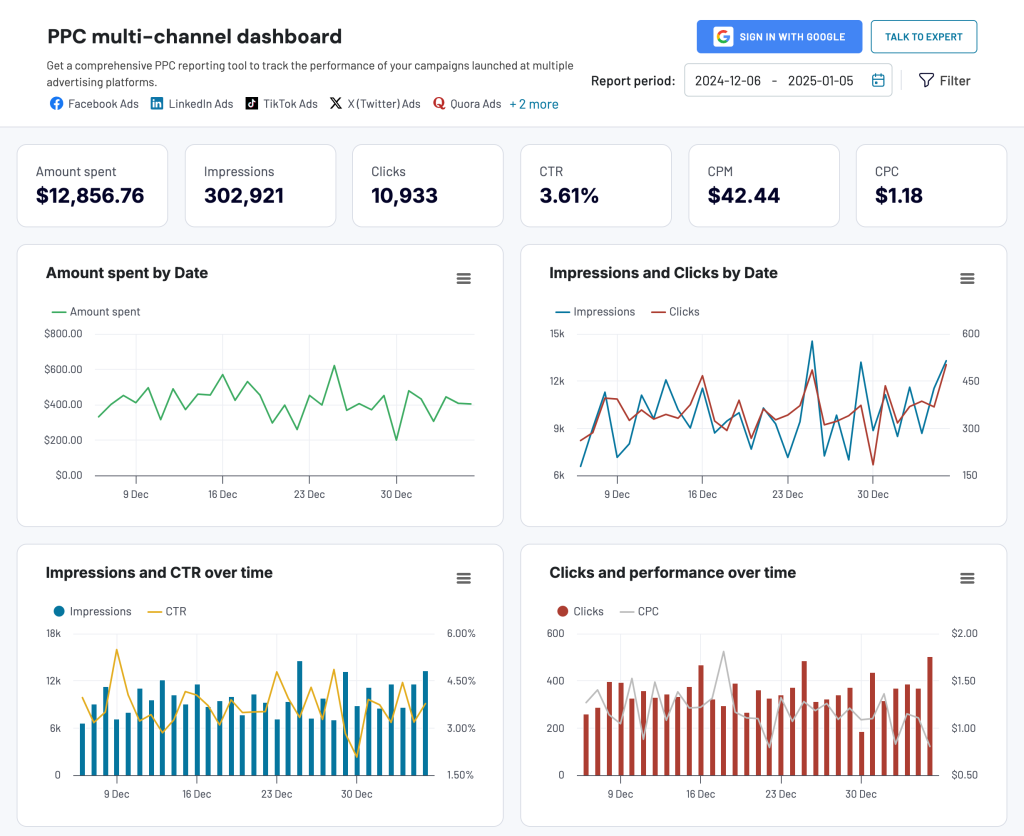
The dashboard allows you to:
- Filter by date to see today’s numbers or examine annual trends, and use logical filters by metrics and dimensions.
- Control key spend metrics: cost per click, cost per impression, cost per action, and others
- Monitor the dynamics of key metrics
- Analyze the performance of each channel (Facebook Ads, LinkedIn Ads, TikTok Ads, and so on) in a single interface. You can filter by source, select multiple of them, and so on.
- Combine campaigns from different channels to compare the cost and impact
- Compare the performance of all channels and campaign types.
Moreover, this PPC multichannel dashboard is available as a template for external reporting platforms, including Google Sheets, Looker Studio, Power BI, and Tableau. You can get started with any of these at no cost.
#2. PPC monthly budget dashboard template in Google Sheets
PPC audit also includes an evaluation of cost efficiency. In this regard, you can rely on our PPC monthly budget dashboard template. It lets you track the dynamics of spending on advertising and provides a budget overview for the current month with spending predictions and alerts to avoid budget overspending.
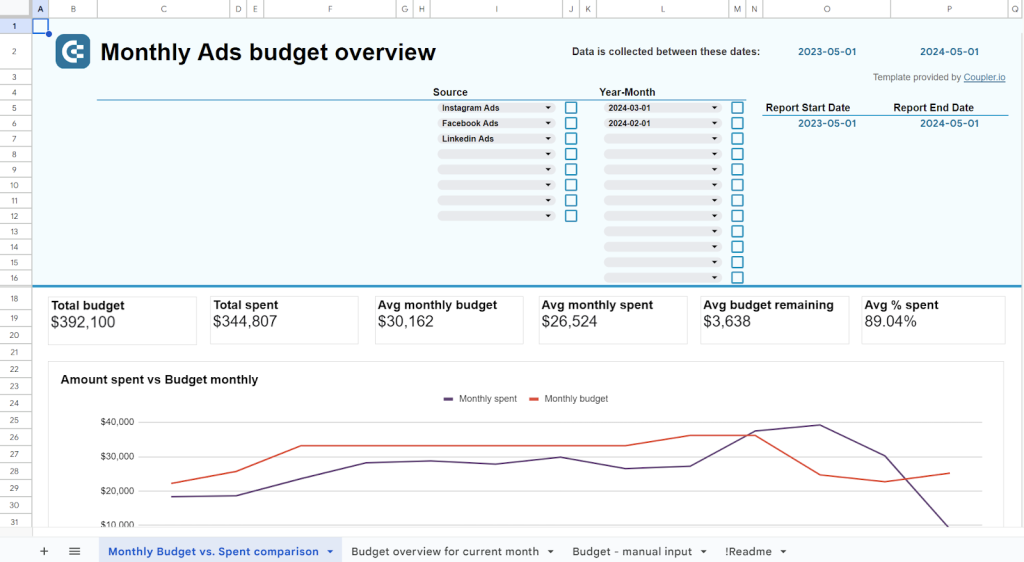
#3. PPC monthly budget by campaign group dashboard – a free template
Managing your ad spend effectively is key to running a successful PPC campaign. The PPC monthly budget by campaign group dashboard offers a detailed view of your monthly ad budgets and spending across campaign groups like traffic, engagement, and promo.
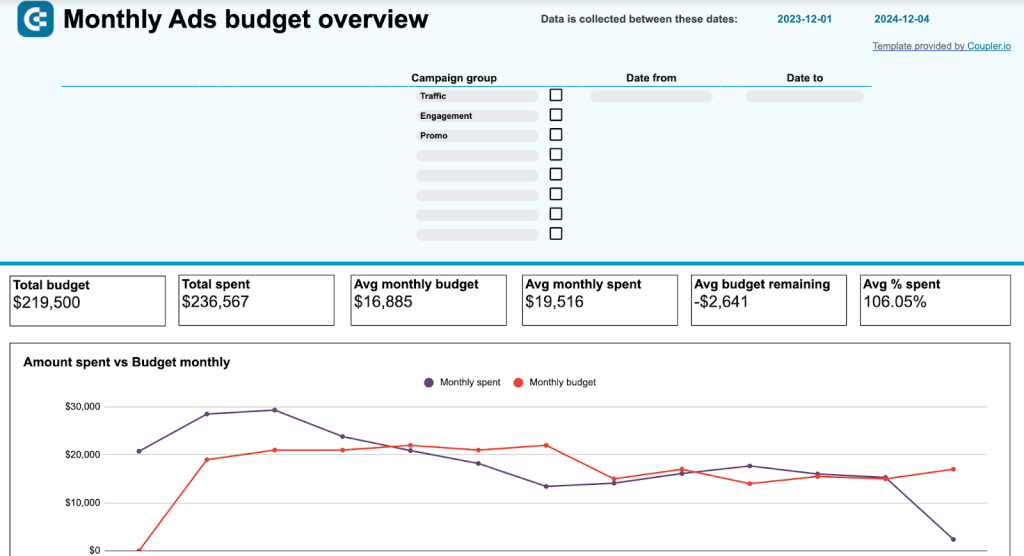
It compares allocated budgets versus actual spend over time so that you can identify overspending or underspending trends. With features like budget remaining, percentage spent, and spend dynamics by day or month, it empowers you to make precise adjustments to maximize ROI. The dashboard is built in Looker Studio by Coupler.io.
#4. Google Ads PPC dashboard template
This is an automated dashboard powered by Coupler.io – a data analytics and automation platform that can help you gather, blend, and analyze your ad and marketing data.
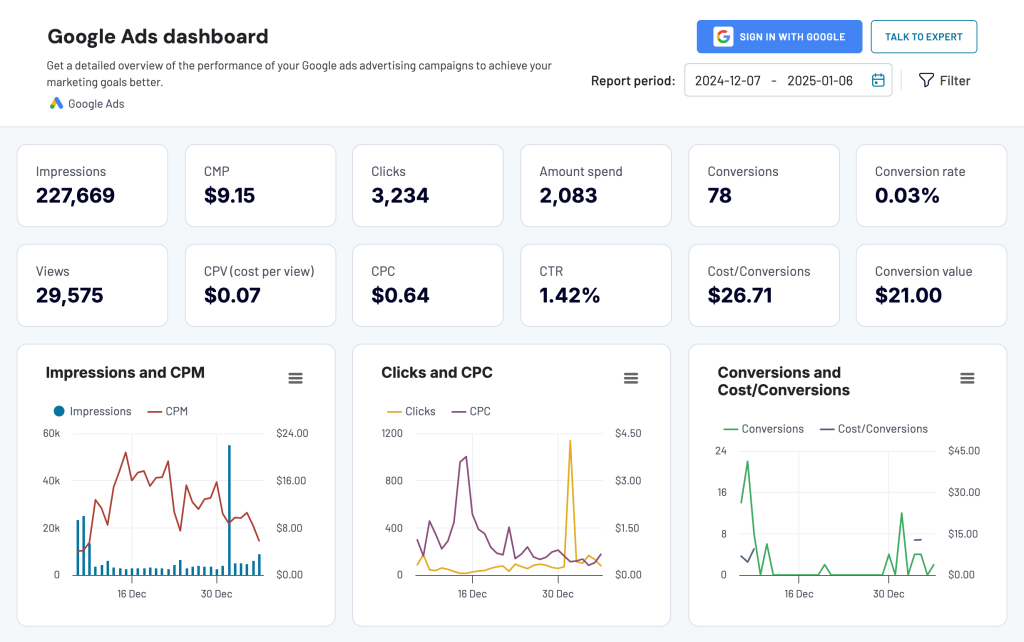
Using this dashboard is very easy. You will only need to connect your Google Ads account to Coupler.io. All the settings are already pre-selected, so the relevant data will be extracted and visualized automatically in a matter of minutes. Once this is done, you will get your ad performance analytics.
The dashboard is also available as a template in Google Sheets, Looker Studio, and Power BI. Pick the version that meets your reporting needs and try it out.
#5. Quality score analytics dashboard for Google Ads – a free template
Improving Quality Scores is essential for achieving better results in your PPC campaigns. This Looker Studio dashboard by Coupler.io helps you analyze historical and impression-weighted quality scores across campaigns and keywords. With metrics like CTR, CPC, and search impression share, it enables you to uncover areas where quality improvements can reduce costs and boost visibility.
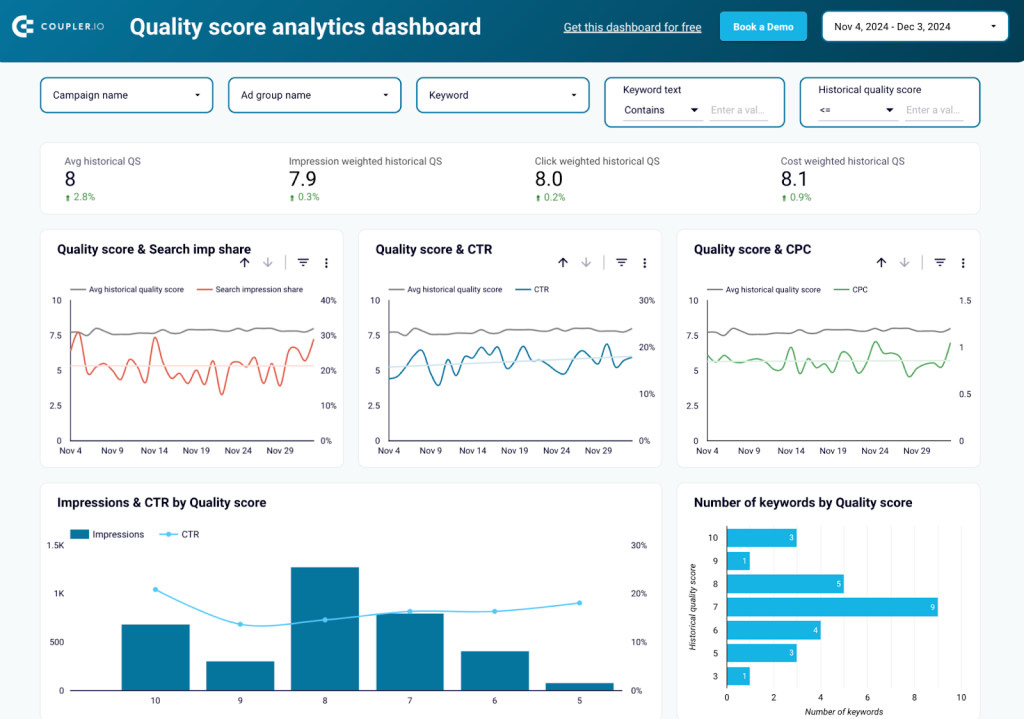
You can pinpoint low-performing keywords and ad groups, showing their impact on overall campaign health. By linking quality scores to ad spend and predicted CTR, it gives you actionable insights to enhance relevance, engagement, and landing page performance.
#6. Google Ads creatives dashboard – a free template
This Looker Studio template by Coupler.io is designed to help you drill deep into your Google Ads creative performance. It highlights granular metrics like video views, CTR, conversions, and ad type breakdowns, making it easy to identify what’s driving results and what needs optimization.

The Google Ads creatives dashboard’s unique strength lies in its ability to compare performance across creative types, such as image ads and dynamic search ads, to give you a clear view of which formats resonate with your audience. With visual spend dynamics and top creatives by conversions, it enables precise budget adjustments for maximum ROI.
#7. Facebook Ads PPC dashboard template
Just like in our previous example, this live PPC dashboard is built with the help of Coupler.io and is available for free.
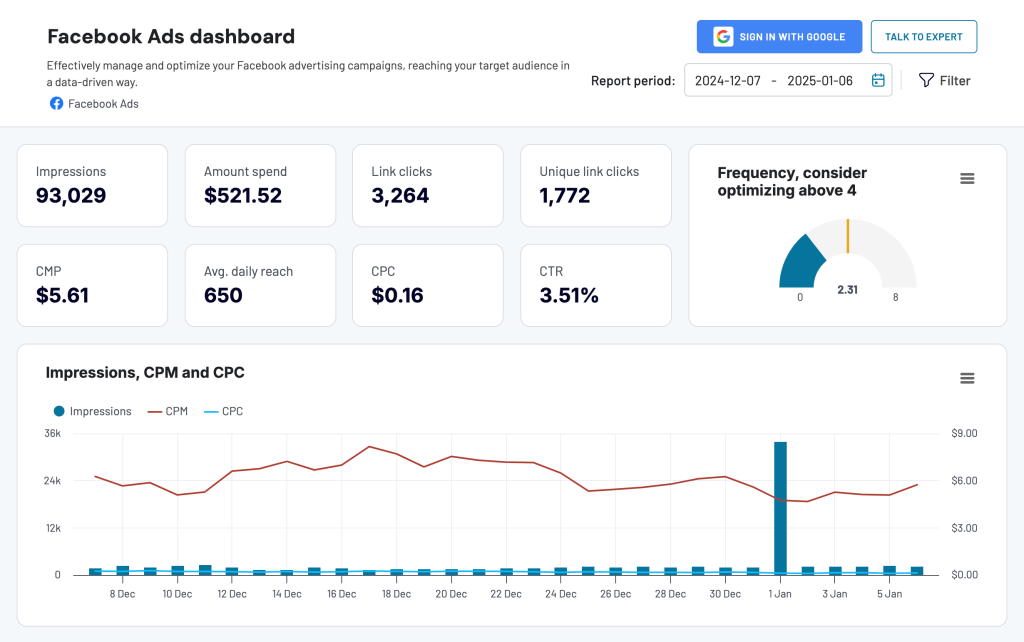
The dashboard allows you to monitor and analyze key metrics and KPIs, as well as measure campaign effectiveness, unleash growth opportunities, and do more. You can get different essential insights to optimize your campaigns with no additional effort.
In you’d like to use this dashboard in external tools, use it as a template. Connect your Facebook Ads account to load your advertising performance data to the dashboard in Power BI, Looker Studio, or Google Sheets.
#8. Meta Ads creatives dashboard – a free template
This dashboard, powered by Coupler.io and designed in Looker Studio, simplifies the process of Meta ad creative analysis. It provides detailed insights into key metrics like impressions, clicks, spend, CPC, and CTR, helping you assess the performance of individual creatives and campaigns.
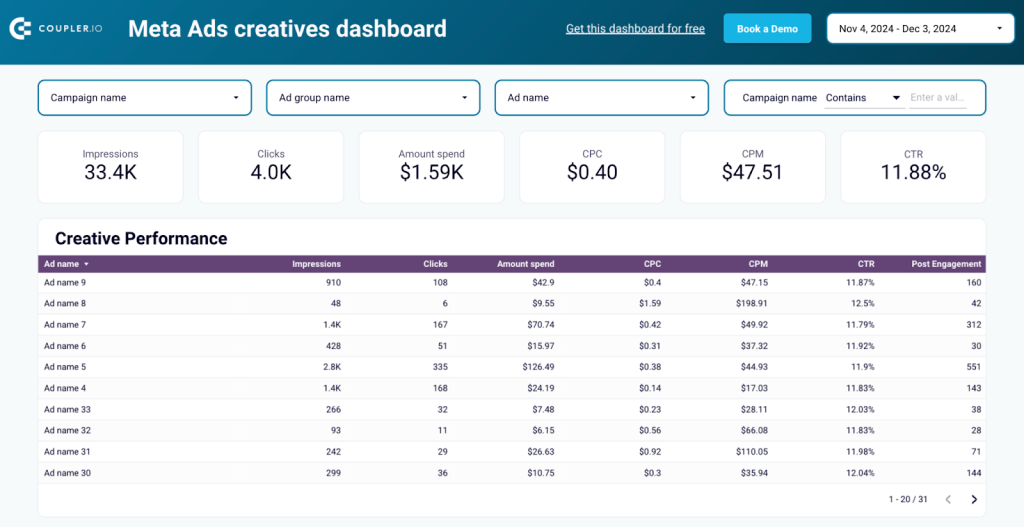
The dynamic visualizations like trends for impressions, CPC, and spend dynamics, make it easy to spot patterns and optimize underperforming assets. The template is fully scrollable, filterable, and customizable.
#9. LinkedIn Ads PPC dashboard template
This automated dashboard allows you to monitor key metrics and gain valuable insights from your data. With this pre-built template, your LinkedIn Ads dashboard will be ready in minutes.
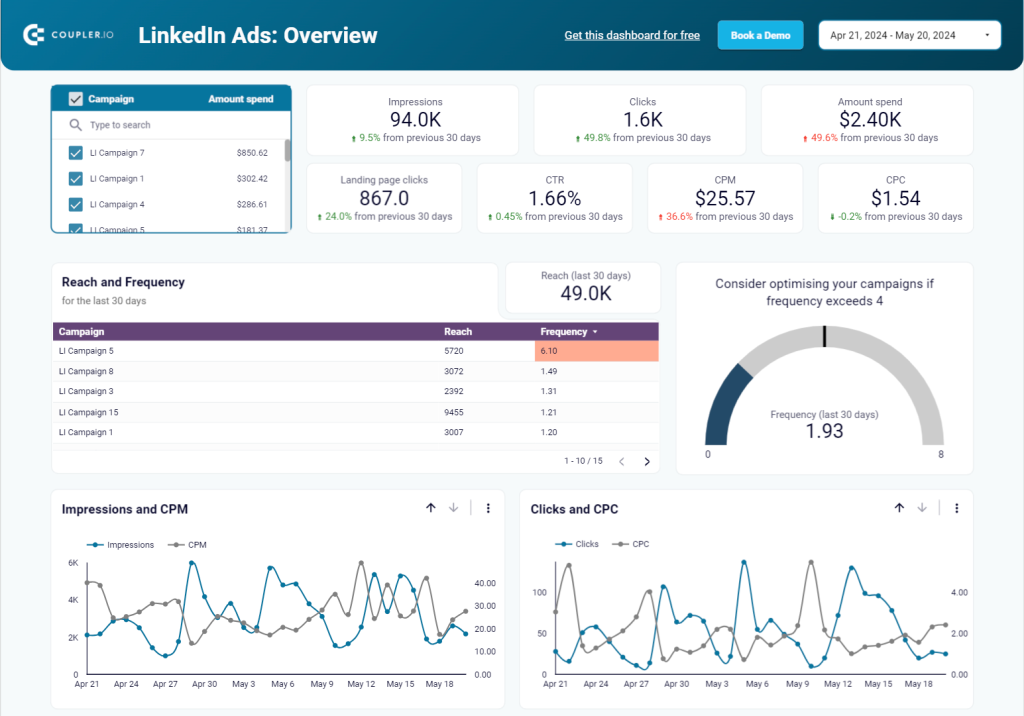
It’s a valuable tool both for day-to-day monitoring and for scheduled PPC audits.
#10. LinkedIn Ads creatives dashboard – a free template
A similar dashboard is also created for LinkedIn Ads. It helps to evaluate creative performance through detailed metrics like impressions, clicks, CPC, CPM, conversions, and engagement rates. It focuses on providing clarity about campaign-specific results, making it easier to optimize your LinkedIn ad strategy.
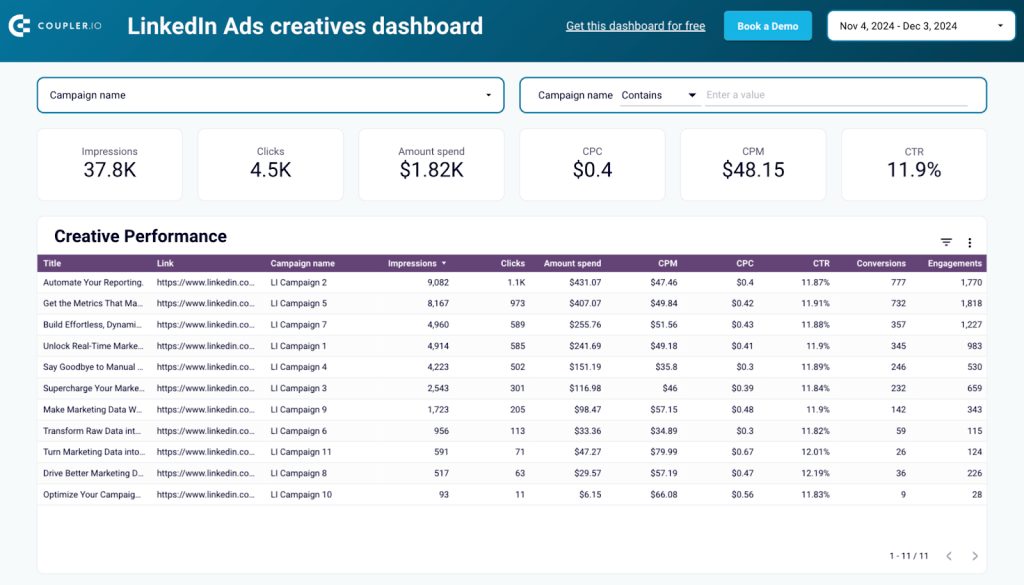
What sets this dashboard apart is its ability to highlight engagement trends and creative effectiveness, which are critical for LinkedIn’s professional audience. Whether you’re refining messaging or improving creative designs, the LinkedIn Ads creatives dashboard gives the insights to maximize impact on a platform known for high-value leads.
It is interactive customizable, and perfect for an efficient PPC audit.
#11. Google Ads vs Meta Ads – a free template
Another critical aspect of PPC auditing is comparing the performance of your key PPC platforms. This Coupler.io-powered Looker Studio dashboard allows you to evaluate Google Ads and Meta Ads side by side, providing insights into metrics such as spend, impressions, clicks, CTR, and CPC.
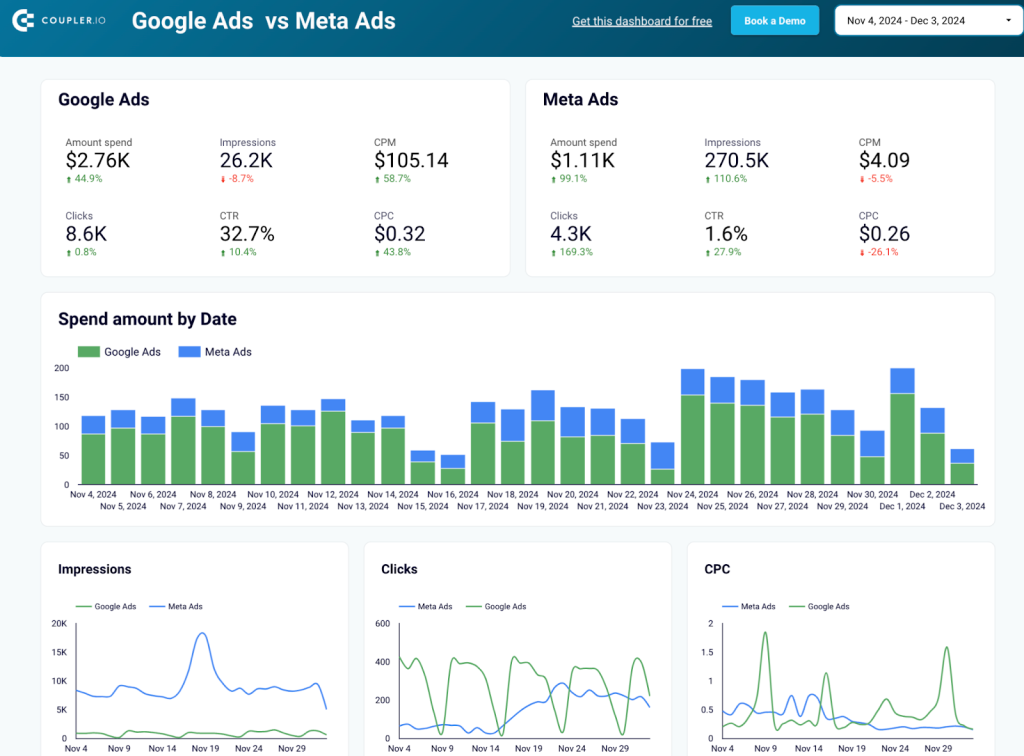
It can help you identify which platform delivers better ROI for your campaigns. With clear visualizations of spend trends, click performance, and campaign-specific results, you can make data-driven decisions about budget allocation and creative optimization across platforms.
Read about how tracking your ads funnel can help you achieve better results and ROI on your campaigns.
Ensure regular PPC audits to maximize results
Many action points on our checklist can generate improved results relatively quickly. However, it’s important to understand that a PPC audit is a long-term investment. When it’s performed regularly and consistently, it brings the most noticeable results with time. Updating account structure and ensuring ad relevance, keeping your keywords and ad copy fresh… All these steps are very helpful for ensuring the best outcome and boosting your ad performance. If you are curious to learn more, check out our guides on PPC reporting and PPC competitors analysis.
We hope our checklist and step-by-step guide help you conduct a PPC audit that makes a difference!

